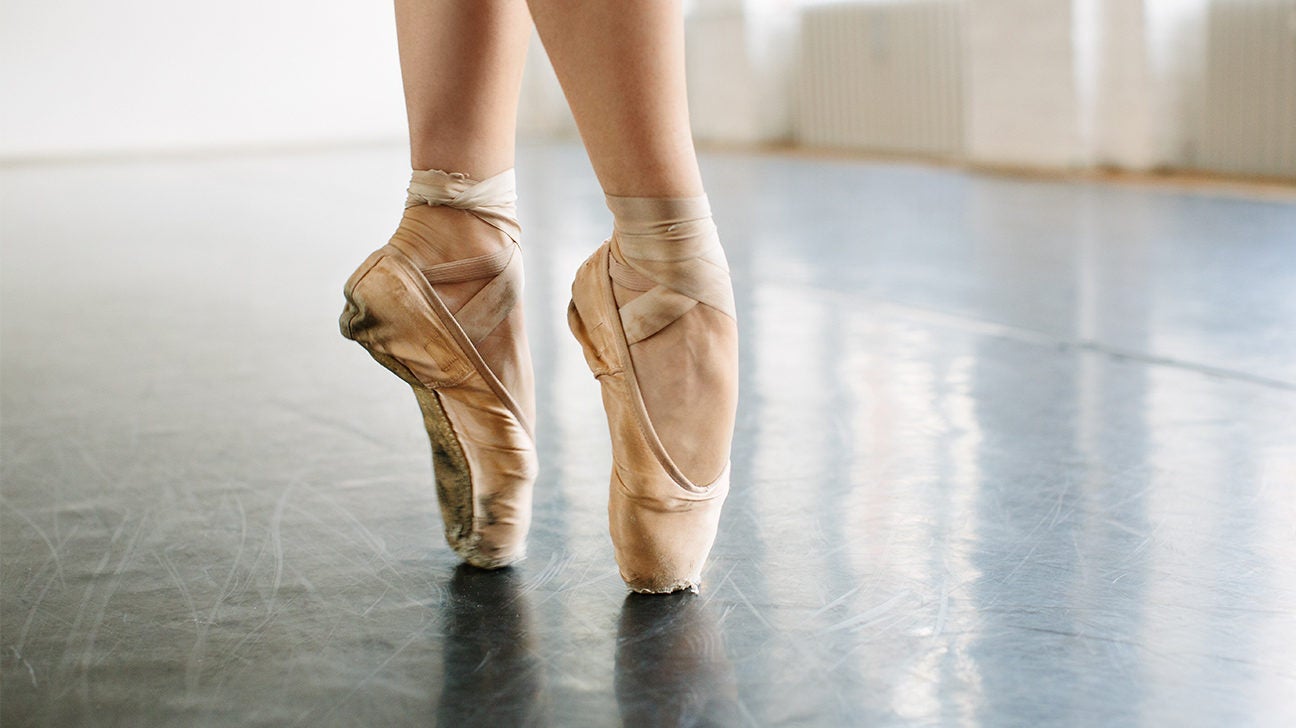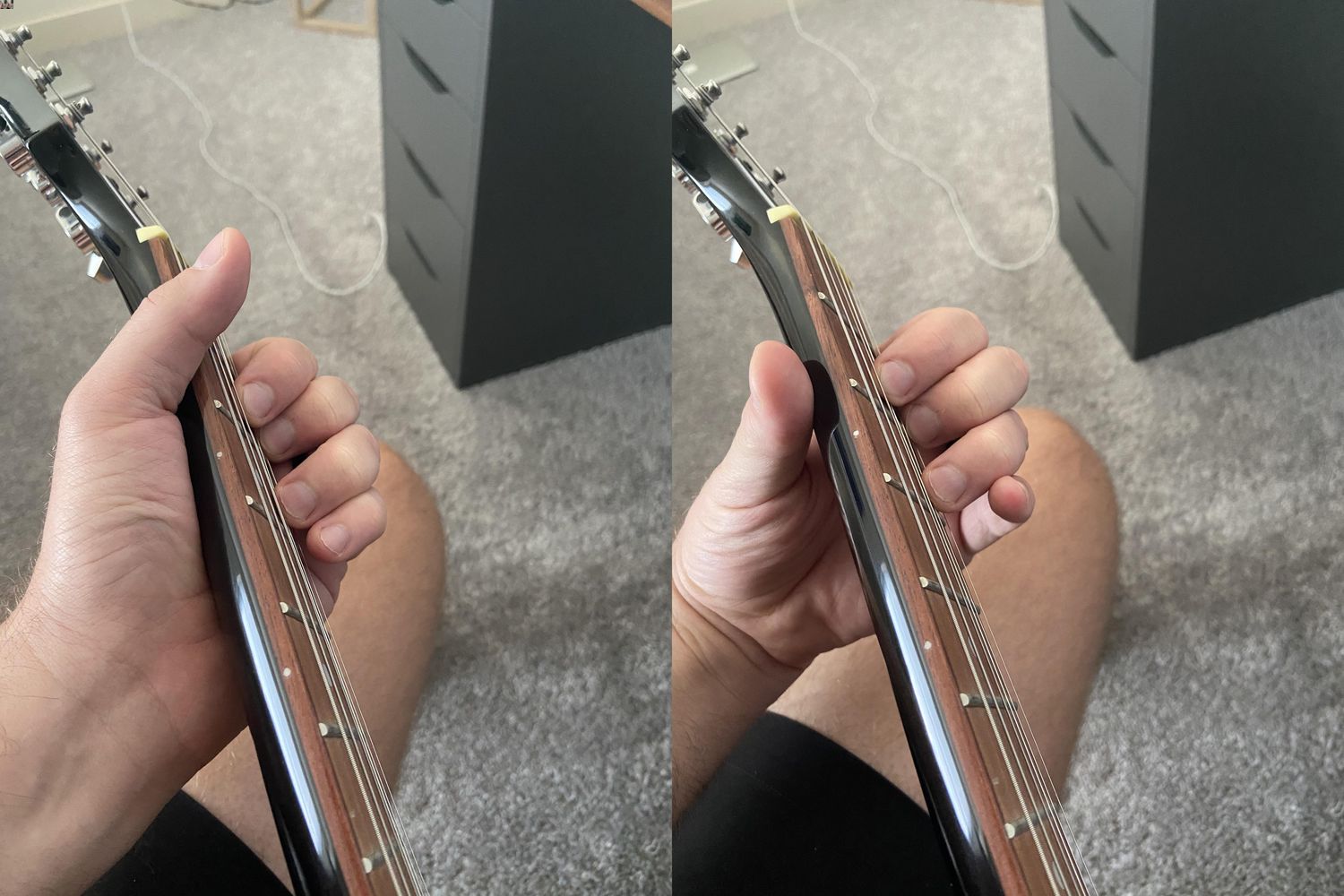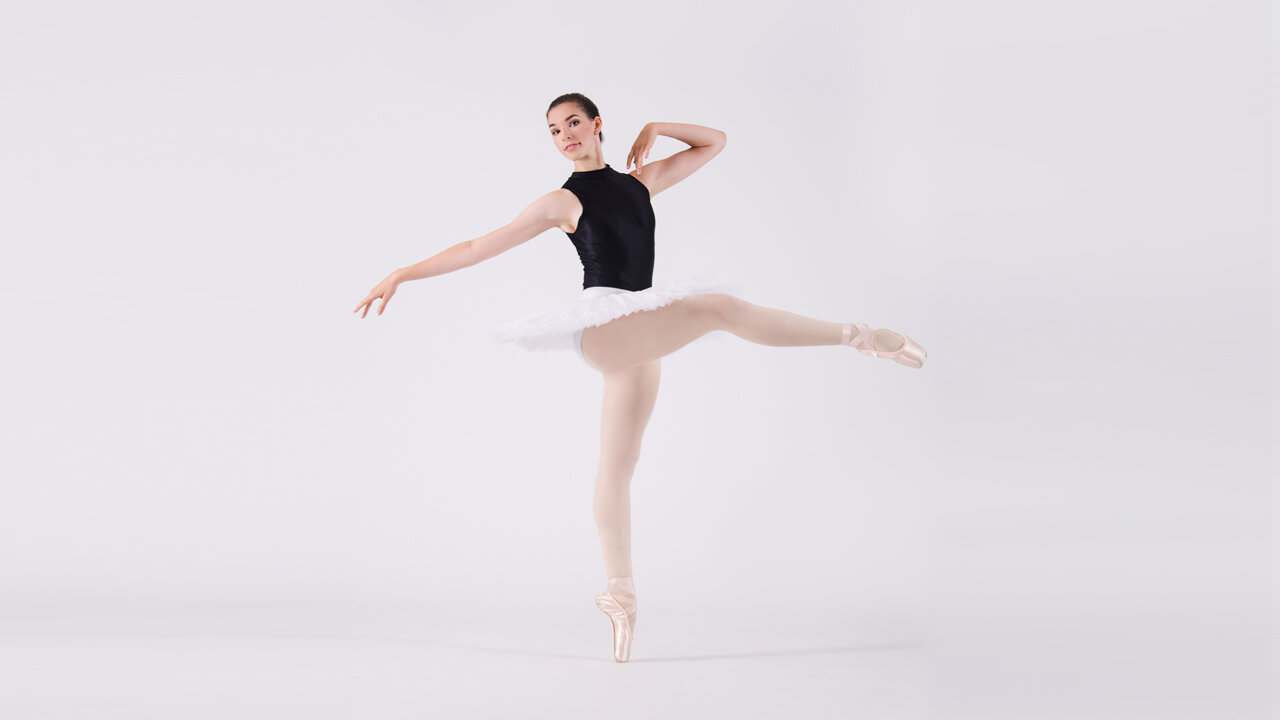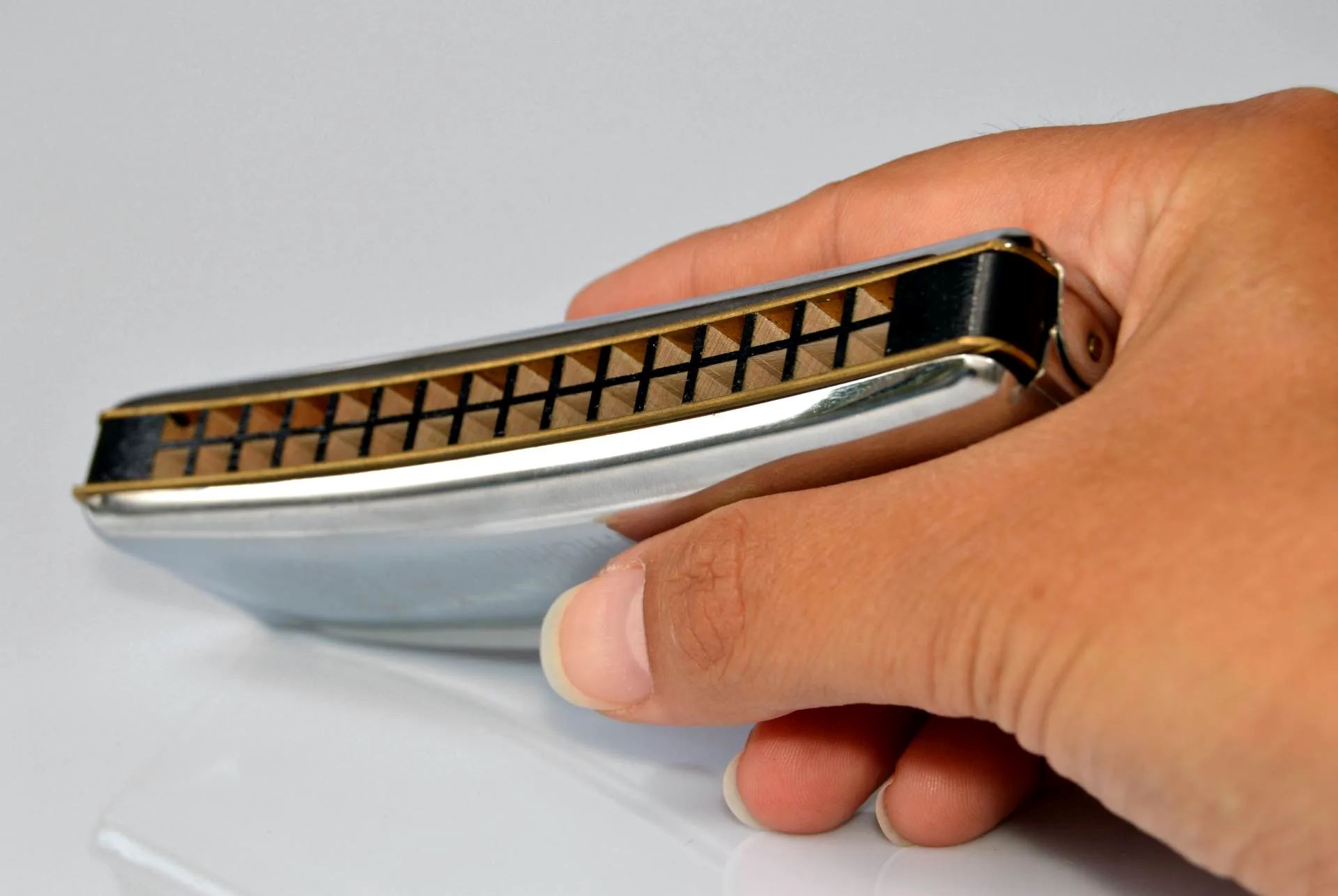Home>Events & Info>Ballet>How To Hold Your Leg Up In Ballet
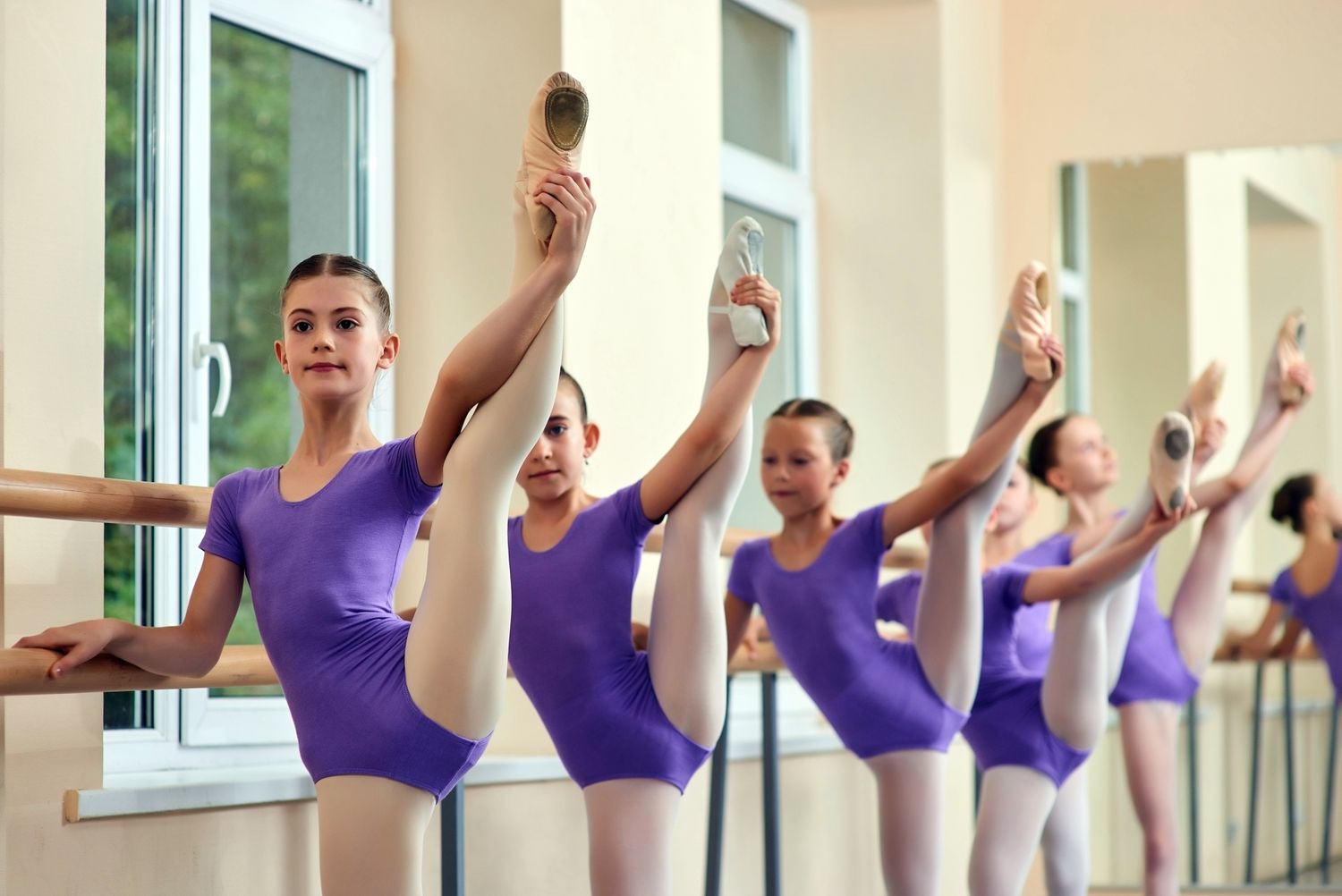

Ballet
How To Hold Your Leg Up In Ballet
Modified: January 22, 2024
Learn the proper techniques to hold your leg up gracefully in ballet. Discover tips and exercises to improve your strength and flexibility for a flawless performance.
(Many of the links in this article redirect to a specific reviewed product. Your purchase of these products through affiliate links helps to generate commission for AudioLover.com, at no extra cost. Learn more)
Table of Contents
- Introduction
- Understanding Leg Technique in Ballet
- Strengthening Exercises for Leg Support
- Improving Balance and Stability
- Proper Alignment and Posture
- Stretching and Flexibility Training
- Tips for Holding Your Leg Up in Ballet
- Common Mistakes to Avoid
- Overcoming Challenges and Developing Consistency
- Conclusion
Introduction
When it comes to ballet, one of the most breathtaking and awe-inspiring techniques is the ability to hold your leg up in various positions. Whether it’s a developpé, an arabesque, or a penché, the grace and strength required to suspend the leg in the air seem almost superhuman. As an aspiring dancer or anyone interested in the art of ballet, you may wonder how you can achieve such beautiful leg extensions.
In ballet, holding your leg up requires a combination of proper technique, strength, balance, alignment, and flexibility. It is a skill that takes time and dedication to develop, but with the right training and guidance, you can reach new heights in your dance practice.
This article will discuss essential factors to consider and provide practical tips to help you improve your leg extension and hold it up with control and poise. We will dive into strengthening exercises, balance and stability training, alignment and posture corrections, stretching techniques, and common mistakes to avoid. By following these guidelines, you will be well on your way to mastering the art of holding your leg up in ballet.
Understanding Leg Technique in Ballet
In ballet, the leg is often considered the foundation of movement and expression. It serves as a powerful tool to create lines, shapes, and convey emotions. Understanding the proper technique behind leg extensions is crucial to achieving precision and beauty in your movements.
One fundamental aspect of leg technique in ballet is the concept of turnout. Turnout refers to the external rotation of the legs from the hips, allowing the feet to be pointed outwards. This alignment helps create clean lines and allows for greater flexibility and range of motion. To achieve proper turnout, it’s important to engage the deep rotator muscles of the hips and maintain alignment throughout the body.
Another key element is the use of the core muscles for stability and control. The core serves as a powerhouse, supporting the leg and maintaining balance. By strengthening and engaging the abdominal and back muscles, you can improve your ability to hold your leg up effortlessly.
Apart from the technical aspects, leg technique in ballet also involves artistic expression. Each position, whether it’s a développé or a grand battement, has its own distinct quality and contributes to the overall storytelling aspect of ballet. Understanding the intention and emotion behind each position will help you bring life and depth to your movements.
As you develop a deeper understanding of leg technique, it’s important to remember that proper alignment and technique are essential. Avoid forcing your leg higher than you can comfortably maintain control. Gradually work on building strength and flexibility to achieve higher extensions over time.
Now that we have discussed the fundamentals of leg technique in ballet, let’s move on to exploring various exercises and training methods to strengthen your legs and improve your ability to hold them up with ease and grace.
Strengthening Exercises for Leg Support
In order to hold your leg up in ballet, it’s essential to have strong leg muscles that can support the weight and maintain control. Here are some strengthening exercises that can help you develop the necessary strength and stability:
- Tendu and relevé: These exercises focus on strengthening the muscles of the feet, ankles, and calves. Start with tendus, sliding your foot along the floor while maintaining proper alignment. Then, progress to relevés, rising onto the balls of your feet and lifting your heels off the ground. These exercises will help build the strength needed for maintaining balance and sustaining leg extensions.
- Grand pliés: Performing deep pliés in first, second, and fifth position engages the muscles of the thighs, glutes, and calves. As you rise from the plié, focus on lifting your leg to maintain control and stability.
- Pilates exercises: Incorporating Pilates into your training routine can greatly benefit your leg strength. Exercises such as the single-leg bridge, clamshells, and leg circles target the muscles of the hips, thighs, and glutes. These exercises specifically target the muscles necessary for leg support and control.
- Resistance band exercises: Utilizing resistance bands can provide additional resistance and help target specific muscle groups. Place the band around your ankles and perform exercises like standing leg lifts and side leg lifts. The resistance will challenge your muscles and improve their strength for better leg support.
Remember to always maintain proper alignment and technique during these exercises to maximize their effectiveness and minimize the risk of injury. Gradually increase the resistance and duration as your strength improves.
By incorporating these strengthening exercises into your regular training routine, you will gradually develop the necessary muscular strength and control to hold your leg up in ballet effortlessly.
Improving Balance and Stability
Balance and stability are crucial for holding your leg up in ballet. Having a strong foundation and control over your core muscles will greatly enhance your ability to sustain and control your leg extensions. Here are some exercises and techniques to improve your balance and stability:
- Balancing exercises on one leg: Practicing balancing exercises on one leg helps develop the strength and stability required to hold your leg up. Start by standing on one leg and gradually lift your other leg off the ground to a comfortable height. Focus on engaging your core, maintaining proper alignment, and visualizing a strong connection to the floor through your standing leg.
- Pilates and yoga: Incorporating Pilates and yoga into your training can significantly improve your balance and stability. These practices emphasize body awareness, core strength, and proper alignment. The various poses and exercises challenge your stability and help you develop greater control over your movements.
- Core strengthening exercises: A strong core is essential for maintaining balance and stability. Include exercises such as planks, Russian twists, and leg raises to target your abdominal and back muscles. Strengthening your core will provide a solid base for holding your leg up in ballet.
- Slow controlled movements: Practice slow, controlled movements while holding your leg in different positions. This will not only improve your balance but also help you develop the necessary muscle control to sustain your leg extensions. Slowly lift your leg to your desired height, hold it for a few seconds, and then lower it back down with control.
Remember to focus on your breath and maintain a relaxed upper body while performing these exercises. It is common to experience wobbling and challenges in the beginning, but with consistent practice, your balance and stability will improve over time.
In addition to these exercises, incorporating regular barre work and practicing different leg positions across the floor will also contribute to better balance and stability. Keep in mind that achieving balance and stability is a journey that continues to evolve with consistent practice and dedication.
As you continue to focus on enhancing your balance and stability, let’s explore the importance of proper alignment and posture in holding your leg up in ballet.
Proper Alignment and Posture
Proper alignment and posture play a crucial role in holding your leg up in ballet. It not only enhances the aesthetic quality of your movements but also ensures that you maintain control and prevent injuries. Here are some tips for achieving and maintaining proper alignment and posture:
- Stand tall: Imagine a string pulling you up from the top of your head, lengthening your spine and elongating your neck. Stand with your shoulders relaxed and your chest lifted. Avoid slouching or collapsing through your upper body, as this can hinder your ability to hold your leg up effectively.
- Engage your core: Your core muscles act as a stabilizer for your entire body. Engage your abdominal muscles by pulling your belly button towards your spine. This will provide a solid base of support for your movements and aid in maintaining a balanced posture.
- Align your hips and pelvis: Proper alignment of the hips and pelvis is essential for stability and control. Avoid excessive tilting forward or backward. Imagine your hips as a level platform and align them with your shoulders and feet. This alignment will allow for optimal leg extension and prevent unnecessary strain on the lower back.
- Keep a neutral spine: Maintain a natural curve in your spine by avoiding excessive arching or rounding. Find the balance between maintaining a strong and lengthened posture while allowing your spine to maintain its natural shape. This will promote better alignment throughout your body.
- Align your feet and legs: In ballet, proper alignment starts from the feet. Ensure that your feet are pointed in the right direction, following the turnout position from your hips. Align your knees over your toes and avoid hyperextending or locking your joints. This alignment will provide a strong foundation for holding and extending your leg.
It’s important to remember that proper alignment and posture require practice and constant awareness. Take the time to correct and adjust your posture during ballet exercises and routines. As you become more accustomed to correct alignment, it will become second nature, allowing you to hold your leg up with greater stability and grace.
Now that we have discussed the significance of alignment and posture in holding your leg up, let’s move on to incorporating stretching and flexibility training into your regimen.
Stretching and Flexibility Training
Stretching and flexibility training are essential components of ballet training that contribute to the ability to hold your leg up with ease and grace. Proper flexibility allows for greater extension and range of motion, enhancing the overall aesthetic of your movements. Here are some tips for incorporating stretching and flexibility training into your ballet regimen:
- Warm-up before stretching: Prior to stretching, it’s crucial to warm up your muscles to increase blood flow and reduce the risk of injuries. Perform light cardio exercises such as jogging or jumping jacks and then do dynamic stretches like leg swings or arm circles to prepare your body for deeper stretches.
- Focus on target muscle groups: Target the muscles specifically involved in leg extensions, such as the hamstrings, hip flexors, quadriceps, and calf muscles. Incorporate static stretching exercises like forward folds, lunges, and seated straddle stretches to increase the flexibility of these muscle groups.
- Use proper technique: Maintain proper form and technique while stretching to avoid strain or injury. Ease into each stretch gradually, breathing deeply and relaxing into the stretch. Avoid bouncing or forcing the stretch beyond your comfortable range of motion.
- Include active and passive stretches: To improve flexibility, incorporate both active and passive stretches into your routine. Active stretches involve engaging the muscles you are stretching, such as lifting your leg and holding it in an extended position. Passive stretches involve using external aids like a ballet barre or stretching strap to assist in stretching the muscles.
- Consistency is key: To see improvements in flexibility, consistency is essential. Incorporate stretching exercises into your ballet practice on a regular basis. Aim to stretch at least three to four times a week to gradually increase your range of motion and enhance your ability to hold your leg up.
Remember to listen to your body and respect its limits. Flexibility training takes time and patience, so avoid pushing yourself too hard and risking injury. With regular stretching and flexibility training, you will gradually notice improvements in both your range of motion and your ability to hold your leg up with grace and control.
Now that we have covered stretching and flexibility training, let’s move on to some practical tips to help you hold your leg up in ballet.
Tips for Holding Your Leg Up in Ballet
Mastering the art of holding your leg up in ballet requires a combination of technique, strength, and focus. Here are some helpful tips to improve your leg extensions and maintain control while holding your leg up:
- Focus on your breath: Breathing deeply and rhythmically can help you stay centered and focused during your leg extensions. Inhale as you prep for the movement and exhale as you lift and hold your leg. This will help you maintain control and avoid unnecessary tension in your body.
- Engage your core and turnout: To achieve greater stability and control, engage your core muscles throughout the movement. Additionally, ensure that you maintain proper turnout from your hips, allowing your leg to lift with ease and grace.
- Visualize a string pulling your leg: Imagine a strong, invisible string connecting your foot to the ceiling. Visualize this imaginary string pulling your leg upward, aiding in maintaining a consistent extension and height.
- Use your arms for balance: Your arms play a crucial role in maintaining balance and stability while holding your leg up. Use your arms to counterbalance the weight of your leg and keep your upper body aligned and steady.
- Work on gradual progression: Rome wasn’t built in a day, and neither is the ability to hold your leg up effortlessly. Work on gradually increasing the height and duration of your leg extensions. Focus on quality over quantity, aiming for a controlled and sustained lift rather than a forced, quick movement.
- Practice in front of a mirror: Set up a mirror in your practice space and observe your leg extensions from different angles. This will help you identify and correct any misalignments or weaknesses in your technique.
- Seek feedback and guidance: Work with a ballet teacher or coach who can provide feedback and guidance on your leg extensions. They can offer valuable corrections and provide exercises tailored to your specific needs to improve your technique and strength.
Remember, progress takes time and patience. Focus on consistent practice and listen to your body’s limits. With dedication and perseverance, you will gradually see improvements in your ability to hold your leg up in ballet.
Now, let’s address some common mistakes to avoid during leg extensions.
Common Mistakes to Avoid
While striving to hold your leg up in ballet, it’s important to be aware of common mistakes that can hinder your progress. Avoiding these mistakes will ensure that you maintain proper technique and achieve the best results. Here are some common mistakes to watch out for:
- Forcing the height: One of the most common mistakes is trying to lift your leg higher than your current level of flexibility and strength allows. This can lead to improper alignment and strain on your muscles. Focus on gradually increasing your leg height over time rather than pushing for an unrealistic range of motion.
- Compromising turnout: It’s crucial to maintain proper turnout throughout your leg extension. Avoid rolling in or out of your ankles and knees, as this can negatively impact your alignment and stability. Concentrate on keeping your feet and knees in line with your turnout position.
- Maintaining tension in the upper body: Holding unnecessary tension in your shoulders, neck, and arms can sabotage your balance and make leg extensions more challenging. Keep your upper body relaxed and allow your arms to move gracefully in coordination with your leg movements.
- Losing control: Relying solely on momentum or momentum to lift your leg can result in loss of control and unstable movements. It’s important to focus on engaging the core muscles, maintaining proper alignment, and lifting your leg with control and precision.
- Neglecting smaller muscle groups: While it’s essential to strengthen major muscle groups for leg support, neglecting smaller muscle groups can lead to imbalances and increased risk of injury. Include exercises that target the deep rotator muscles, ankles, and feet to ensure overall strength and stability in your leg extensions.
- Ignoring proper warm-up and cooldown: Neglecting to warm up before engaging in leg extensions, or skipping the cooldown, can increase the risk of muscle strain and injury. Prioritize a comprehensive warm-up that includes dynamic stretches and a cool-down with static stretches to prepare and recover your muscles properly.
Avoiding these common mistakes will help you maintain proper technique and reduce the risk of injury as you work towards holding your leg up in ballet. Embrace a mindful and attentive approach to your practice, and you will see significant improvements over time.
Now, let’s discuss overcoming challenges and developing consistency in holding your leg up.
Overcoming Challenges and Developing Consistency
Holding your leg up in ballet can present various challenges along the way. However, with perseverance and a focused mindset, you can overcome these challenges and develop consistency in your leg extensions. Here are some strategies to help you overcome obstacles and maintain progress:
- Set realistic goals: It’s essential to set realistic and achievable goals for your leg extensions. Start by gradually increasing the height and duration of your leg lifts. Celebrate small victories along the way, which will motivate you to continue pushing yourself forward.
- Break it down: If you find it challenging to hold your leg up for an extended period, break the movement into smaller segments. Focus on holding your leg up for a few seconds initially, gradually increasing the duration as your strength and control improve.
- Focus on technique: Quality over quantity is key when it comes to holding your leg up. Instead of rushing to achieve higher extensions, prioritize proper technique and alignment. By focusing on the foundations, you’ll build a solid base for more impressive leg extensions in the future.
- Seek support and guidance: Don’t hesitate to seek support from a ballet teacher or mentor. They can provide feedback, offer advice, and guide you through any challenges you may encounter. They have the expertise to identify areas for improvement and can suggest exercises to enhance your leg extension technique.
- Be patient and persistent: Consistency is crucial in developing your ability to hold your leg up in ballet. Progress may not happen overnight, but with dedication and patience, you will gradually see improvement. Embrace the journey and stay committed to your practice.
- Listen to your body: Pay attention to your body’s signals and avoid pushing yourself beyond your limits. Pushing too hard or ignoring signs of fatigue can lead to injuries. Listen to your body’s needs, take rest days when necessary, and prioritize self-care to maintain longevity in your ballet practice.
Remember that progress is unique to each individual. Focus on your own journey and celebrate the improvements you make, no matter how small they may seem. Embrace the challenges as opportunities for growth, and stay consistent in your practice. With time and dedication, you will develop the strength, control, and consistency needed to hold your leg up in ballet with grace and confidence.
Now, let’s conclude our discussion on holding your leg up in ballet.
Conclusion
Holding your leg up in ballet is a skill that requires a combination of technique, strength, balance, alignment, and flexibility. Through consistent practice and dedication, you can enhance your leg extensions and hold your leg up with grace and control.
Understanding leg technique in ballet, strengthening your leg muscles, improving balance and stability, maintaining proper alignment and posture, and incorporating stretching and flexibility training are all essential components of achieving beautiful leg extensions. Avoiding common mistakes, setting realistic goals, seeking guidance and support, and developing consistency will help you overcome challenges and progress in your ballet journey.
Remember to approach your training with patience, persistence, and a focus on quality over quantity. Celebrate each milestone and acknowledge the progress you make along the way. Ballet is a lifelong practice, and the ability to hold your leg up will continue to evolve as you grow as a dancer.
Keep in mind that the journey to mastering leg extensions in ballet is as important as the end result. Embrace the process, enjoy the beauty of the art form, and let the joy of dance guide you as you strive to hold your leg up with grace and poise.
Now, go forth, continue honing your technique, and soon you’ll captivate audiences with your stunning leg extensions in the magical world of ballet.

